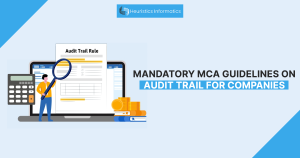With the immense value addition that cloud services offer, more and more organizations are accelerating their cloud migration process, for their workloads. The cloud migration services market was valued at USD 119.13 billion in 2020 and is expected to reach USD 448.34 billion by 2026, at a CAGR of 28.89% over the forecast period 2021 – 2026. Let me tell you about the intricacies of cloud migration process.
Cloud migration services – Scale and accelerate faster with the experts
Today, cloud migration is an essential requirement for all Websites, Applications, and Enterprises. The cloud migration process transfers applications and databases which are running on-premises to the cloud platform, or from one cloud to another. The significant reasons for application migration to the cloud are scalability, increased effectiveness, faster implementation, mobility, and disaster recovery.
Many businesses adopt the cloud strategy and build apps right in the cloud to achieve scalability, availability, cost efficiency, and enhanced performance. However, the cloud migration process for apps that are not developed as cloud-native ones, is complex and requires a thorough strategy. It involves moving the enterprise data centre capabilities to the cloud, usually to run on the cloud-based infrastructure provided by a cloud service provider.
According to IDC, by the end of 2022, 90% of all new apps will feature microservices architectures, and 35% of all production apps will be cloud native.

The HIPL cloud migration process
With more than two decades of experience in delivering trusted technology solutions to enterprises, HIPL offers expert cloud services, for agile and efficient cloud migration solutions. We adopt the following methodology for the standard application migration to the cloud:
- Define Strategy: We define and establish your cloud strategy and objectives based on your migration triggers, business goals, and workload priorities
- Assess Infrastructure: We identify and establish a detailed inventory of your infrastructure and assess your on-premises environments.
- Plan: Our experts review and assess your applications, business goals, and teams to create a plan for the migration.
- Test: Prior to actual migrations, we use a simulated migration to perfect the process. After each real migration phase, the migration is tested into the new environment and outcomes documented. Regular testing enables us to detect problems early and regroup or change direction before data is lost and progress is stalled.
- Migrate: We group applications and then perform the migration in phases. Document each phase using a project management tool to keep everyone, including stakeholders, informed and to gather supporting documentation.
- Support: Once the migration is complete, we perform follow-up tests to determine whether cloud migration was correctly executed. This includes analysing application performance, looking for potential disruptions, and reviewing database security.
No matter the strategy, careful forethought and planning are essential for a cloud migration to be successful. Many applications fail in their new cloud environments due to inadequate understanding of the application, as well as its dependencies and relationships with other applications in the portfolio.

Working out the HIPL cloud strategy
Heuristics Informatics Pvt Ltd. offers application migration to the cloud for enterprises looking to transfer mission-critical applications to the cloud. HIPL acquires multiple cloud strategies for as a part of its application migration services, each with its benefits and drawbacks. You can choose to adopt any of the available migration approaches that suits your organisational requirements. These strategies, form the five “R” of cloud strategy:
- Rehost – Lift and Shift
- Revise – Revise code to take advantage of cloud resources and patterns
- Refactor – Rewrite application code in a cloud friendly manner
- Rebuild – Rebuild application from scratch
- Replace – Replace application functionality with SaaS alternative
Cloud Vendors
The right cloud platform for your business will depend on your specific requirements, the architecture of the applications moving to the cloud, enterprise application integrations, and other factors. Your team needs to decide whether your organisation needs public, private, hybrid, or multi-cloud environments.
After all this planning and strategizing, you need to decide between cloud vendors. Following are the most prominent cloud hosting platforms:
- Microsoft Azure.
- Amazon AWS
- Oracle Cloud
- Google Cloud Platform

Benefits of Cloud Migration
Application migration to the cloud requires a structured approach for business firms to reap the benefits like scalability, productivity, and cost optimization. The path is to be built by the organization itself, providing the right accelerators or resources for cloud migration if required. An enterprise that successfully migrates its applications to the cloud can achieve the following benefits:
- Improved and modernized solutions for business goals
- Reduced time allocated for training new employees
- Wider access to distributed applications
- Decreased complexity and costs
- Application consolidation
- Better security and management
- Increased productivity
- Extended value of IT investments
Whether you develop your cloud solution on your own or need the HIPL experts to build it, we will always be available to perform the migration. Start by assessing your own technology, processes, and team to confirm that the cloud is the right option for your organization.







